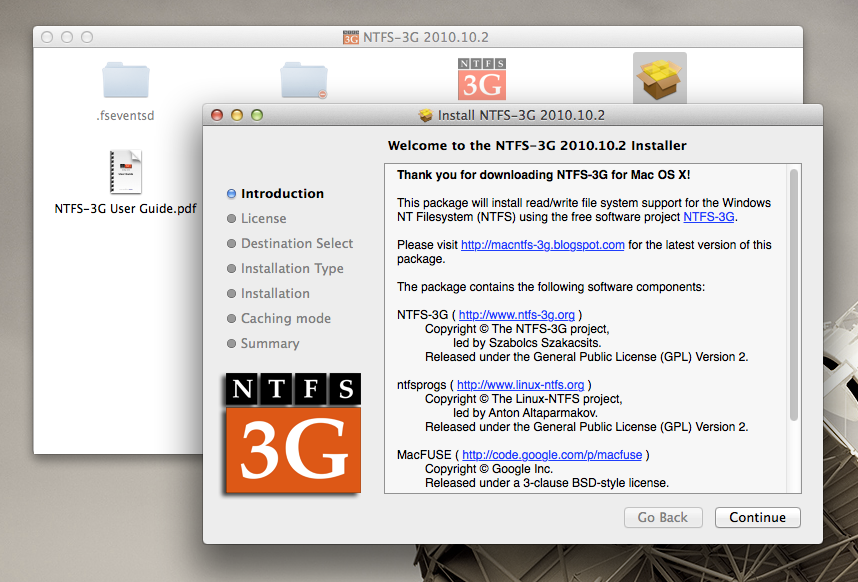

- NTFS 3G APPLE HOW TO
- NTFS 3G APPLE MAC OS
- NTFS 3G APPLE INSTALL
- NTFS 3G APPLE DRIVERS
- NTFS 3G APPLE DRIVER
Your performance numbers are roughly what one could expect from the current NTFS-3G build, but we're working on redoing the I/O layer for the next version (hopefully).Īt that point, NTFS-3G should be able to better match Apple's HFS+ driver in performance. As for myself, I'm permanently running with caching turned on for all my drives. This flexibility has rendered the so called 'stable' build obsolete. for instance you may see data integrity for your internal drive in the event of a system crash as high priority, while you may be more interested in high performance when communicating with external USB drives. You can also turn off caching for individual drives. However, under normal operation (no system crashes, no power cuts, no accidentially disconnected cables prior to unmounting the volume.) your data is equally safe in cached mode as it is in uncached mode. You will achieve the same amount of data safety as the old 'stable' build, at the cost of lower performance numbers. This is useful if you're worried about losing data in the event of a system crash. The caching layer isn't at all experimental, but if you're concerned about data integrity you can turn off caching through the preference pane in the new 'unified' build. The 'stable' build was in the end built from the same code base as the 'ublio' build, but with a few features turned off at compile time. 'ublio' was unfortunate, and didn't at all reflect the actual maturity of the code. Using the command line utility bless (see man bless for more information).
NTFS 3G APPLE INSTALL
Intel users only: Install the rEFIt boot manager for better control of the boot process.Holding down the Option key during boot (or Alt for non-Apple keyboards).
NTFS 3G APPLE DRIVERS
It seems that this issue can't be solved, but only worked around since the Startup Disk preference pane doesn't recognize file system drivers that are not provided by Apple. Disabling or uninstalling ntfs-3g brings them back. After installing ntfs-3g, all NTFS drives will disappear from the "Startup Disk" preference pane.
NTFS 3G APPLE MAC OS
Packaging, patching, Mac OS X-related development and testing is done in the context of my development efforts with the Catacombae projects. If you are having problems with NTFS-3G, write a forum post about it in the NTFS-3G Forum (or post a question as a blog comment if you're just unsure of how things work).
NTFS 3G APPLE HOW TO
Information on how to install and use NTFS-3G for Mac OS X can be found in the User Guide. The package has been tested with Mac OS X 10.4.11/Intel and Mac OS X 10.5.6/Intel. Mac OS X 10.4/10.5, running on an Intel or PowerPC computer.The 'legacy' build will probably be removed in the future, unless anyone has a good reason that it should be kept maintained.Ĭertain patches such as the caching layer are omitted in this build. We now have a 'standard' build, and a 'legacy' build in case anyone is still interested in the limited feature set of the old 'stable' build.



 0 kommentar(er)
0 kommentar(er)
